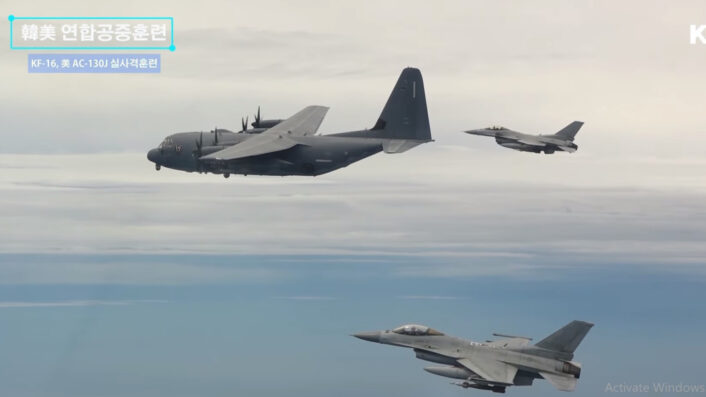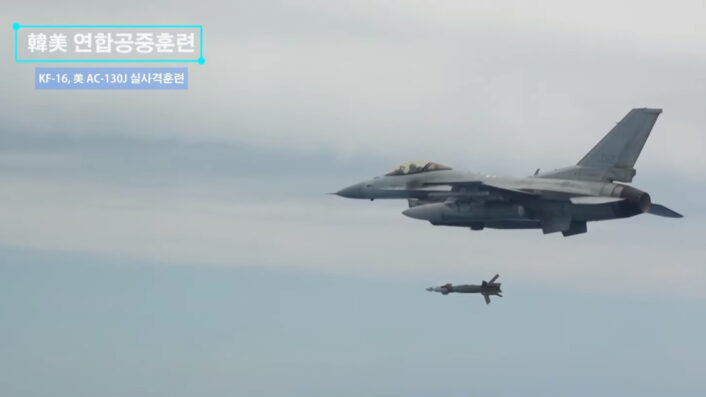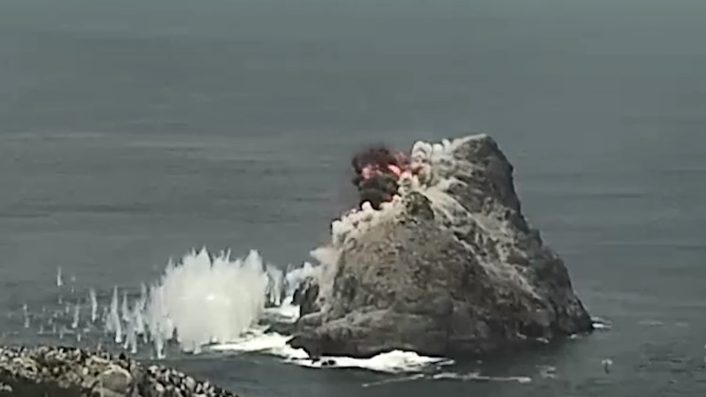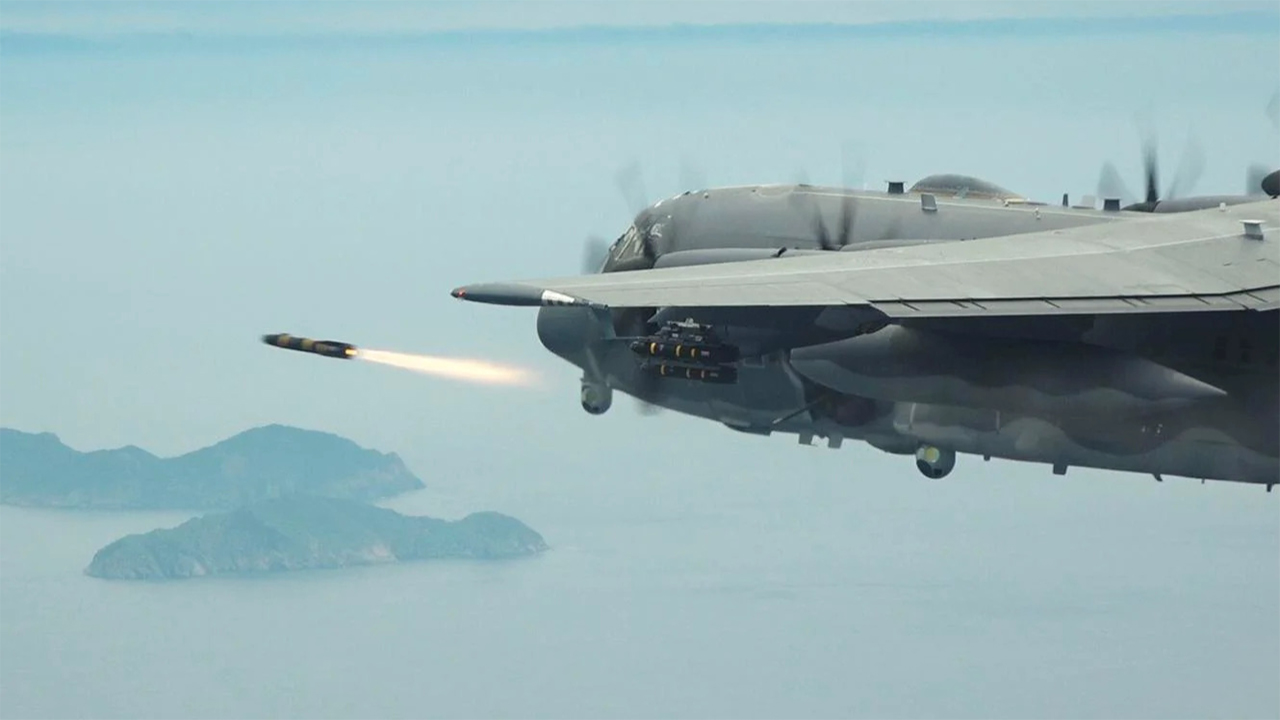The AC-130J was used in a Close Air Support role during a training mission with ROKAF KF-16s, which also dropped Paveway laser-guided bombs.
A USAF (U.S. Air Force) AC-130J Ghostrider gunship aircraft fired two AGM-114 Hellfire II missiles while a ROKAF (Republic of Korea Air Force) KF-16 dropped a Paveway laser-guided bomb at a small island feature during an exercise between the two militaries. The drill on Jun. 20, 2024, comes amid increasing tensions between the U.S.-South Korea alliance and North Korea.
As the video shows, the AC-130J Ghostrider is also carrying four GBU-39 SDBs (Small Diameter Bombs) on the outermost pylon of the right wing. The AGM-114 Hellfire IIs are carried in a similar arrangement, and then two are launched one after the other. The missiles then hit the hillock island.
The longer version of the video shows South Korean ground crews loading GBU-12/B Paveway II bombs onto a hardpoint on the left wing of the ROKAF KF-16. Two KF-16s are flying with the AC-130J in what appears to be a ground-attack strike package. More aerial assets not seen in the video are also part of the drill, as official descriptions reveal.
U.S. AC-130J Ghostrider close air support gunship launch AGM-114 Hellfire II missiles (at 2:33) during live-fire training with South Korea. pic.twitter.com/9Xs32XoBU5
— Clash Report (@clashreport) June 20, 2024
The trio of aircraft is filmed from the cockpit of another unidentified aircraft, likely another KF-16. The KF-16s released the Paveway bombs to strike the island hill, with the Ghostrider then firing the two Hellfires at the same target.
Tactical utility against the North
It is not known whether the SDBs seen on the AC-130 were also fired, but there is little reason to believe that they were not, given that the goal of the exercise appears to demonstrate the Ghostrider’s CAS (Close Air Support) capability. This could be employed against North Korean tactical land targets like armored columns, troop concentrations, command and control centers and artillery placements.

A single AC-130J with its port side (left-side) 30 mm and 105 mm cannon can be a considerable threat for land force detachments in both offensive and defensive roles. With its two EO (Electro-Optical) systems, one on the chin under the nose and the other on the left-side of the underbelly, the Ghostrider can also serve as an effective ISR (Intelligence, Surveillance and Reconnaissance)-strike platform. It can watch North Korean land maneuvers, quickly sharing information with other air, ground assets over data links and ready to release weapons upon hostile movements.

However, these operations are better suited for a non-contested, AD (Air Defense)-free battlespace. Moreover, many of Pyongyang’s larger strategic underground mountain command, control nodes or supply lines will be hidden deeper in the country’s interior, which would be safe from the relatively small GBU-12s and AGM-114s. Possibly, the U.S. would envisage the stealth B-2 Spirit bombers dropping the GBU-57 MOP (Massive Ordnance Penetrator) “bunker buster” for such missions.
The KFN (Korea Forces Network) channel, that also released the footage, said in the video description that the U.S. “AC-130J special operations aircraft (was) used in CAS training with the Korean Air Force’s F-15K, (K)F-16, FA-50 fighter, KA-1 air control attack aircraft.” “The Air Force’s (K)F-16 fighter jet undergoes practical shooting training together,” the description added. These other aircraft are however not visible in the video.

AC-130J Ghostrider gaining prominence
The Ghostrider was also used to destroy small maritime targets in the Balikatan 24 exercises with the Philippine military in May 2024. The aircraft fired its port-side cannons on the targets, as official videos of the drill showed. The exercises with the Republic of Korea (RoK) military come in the backdrop of increased Russian and North Korean defense and strategic dalliance, where the two recently signed defense and security pact.
The agreement, signed during Russian President Vladimir Putin’s visit to Pyongyang and meeting with leader Kim Jong-un, mandates both coming to the other’s defense in the event of being attacked. This secures Russia’s eastern front before U.S. and NATO, assures North Korea superior Russian military support and technology and from both their perspectives, adds deterrence to the US, Japanese and European alliance.













